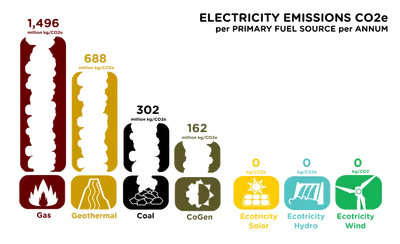Decarbonisation: challenges and outlook for NZ
11/11/2018

Our modern world is completely dependent on electricity. If the ability to produce electricity suddenly didn’t exist, we’d be in a lot of trouble.
In order to meet our thirst for power, electrical companies have been using fossil fuels to hit their targets. For a long time these fuels have been one of the easiest available sources for creating electricity. Of course, we now know the toll extracting, refining, and burning fossil fuels has on the environment.
The process of reducing the carbon in the electricity we use is known as decarbonisation, and it’s a process New Zealand is going through right now. As costs for alternative energy sources like hydro, solar, and wind fall, decarbonisation has been increasing. And the new Government is keen to give more resources over to rapid decarbonisation. However, this comes with its own set of challenges.
Challenges of decarbonisation
According to a report by the Ministry of Social Justice, our greenhouse gas emissions are relatively low on a world scale (0.2% of the global total), however, they’re high on a per capita level, and we’ve had less success than places like the EU in reducing them.
Around 50% of our emissions are produced in the agricultural sector, and there are currently only limited ways to improve. We could reduce our use of fertisilers, turning marginal agricultural land into carbon sinks (forest) or biofuel crops, and change our selection of livestock. However, it doesn’t seem that these changes will make significant improvements.
While New Zealand has one of the highest rates of renewable energy in the world, at around 60%, our transport industry is also struggling with decarbonisation. We need electric vehicles to become more widely used and accepted in order to make progress in this area.
The same is true for the industrial sector, where many companies rely on carbon-heavy processes. A report from Lund University suggests that many processes can become carbon-neutral through the introduction of carbon capture and storage. This research and technology are in their infancy, so a lot of testing/research needs to be done to make sure this is a viable long-term solution.
We’re adopting more efficient and eco-friendly policies and techniques in our homes and offices, with improved efficiency of electronic goods, solar panels on roofs, cleaner construction materials and energy-efficient passive design. Much of these positive changes rely on businesses, homeowners and planners/deisgners being aware of the issues and championing change. In the future, buildings may more to decentralised grids to cut down on emissions from transport of energy – this will require new infrastructure and policy.
The key to New Zealand’s successful decarbonisation is for all these sectors to work together on solutions, sharing knowledge and research. There’s also an increasing need for education of the public and key stakeholders, so the extent and nuances for the problem are understood. Decarbonisation is as much about social and cultural change as it is about technological change, and we won’t make the change we need if we can’t get the people behind them on board.
We’re bouyed up by the support kiwis have shown for Ecotricity and our efforts to assist with New Zealand’s decarbonisation. We believe we have the potential to lead the world in decarbonisation – it’s just a matter of putting a bit of that Kiwi ingenuity to work!







